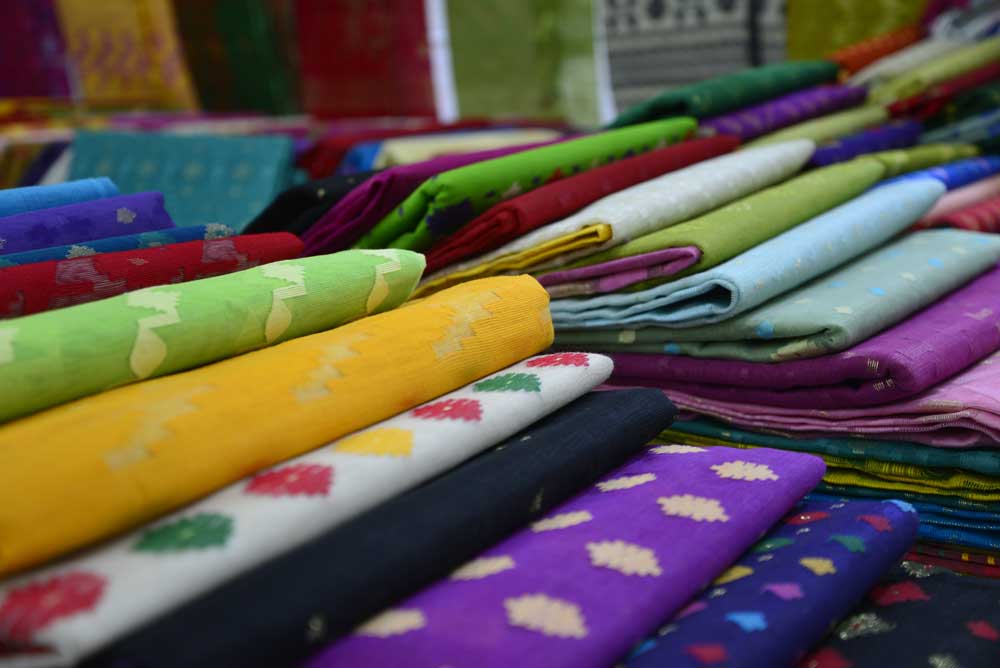Think about this. Over 38 million of the women in India are weavers. That’s more than the entire population of Malaysia. Or even Australia. With such a rich plethora of weavers and weaves, India is positioned to create handlooms that are as diverse as they are beautiful and unique. The lives of weavers are much like their profession. As author Joan Erikson said, ‘A good life is like weaving. Energy is created in the tension. The struggle, the pull, and tug are everything’. Although women are involved in the creation of handlooms at every stage – from spinning the yarn to dyeing – the lack of ancillary support can prove to be a stumbling block to their career progress, especially since this has traditionally been an unorganised sector.
However, recent policy changes and the inclusion of schemes can potentially flip the narrative. With some awareness and drive, women weavers across India can surge ahead and make their careers lucrative – in terms of both recognition and remuneration.
Preferential Loans
‘The Weaver MUDRA scheme is one of the most popularly availed among weavers as well as weaver-entrepreneurs across the country,’ says M Vishal Reddy, Deputy General Manager at a public sector bank. ‘Weavers who wish to avail loans can do so at a concessional rate of 6 per cent. In addition, there is also a loan credit guarantee for three years and margin support of up to ₹25,000, to ease the burden on weavers. Self-help groups and handloom cooperative societies are also eligible for this loan, with margin money assistance of ₹200,000 for every hundred weavers. Although all scheduled commercial banks, regional rural banks and state cooperative banks can participate, the Handloom Weaver MUDRA Portal has been developed in association with Punjab National Bank to streamline disbursement of funds and margin money.’
Branding & Marketing
When India’s inaugural handloom day was announced in August 2015, the Government followed it up with an initiative called ‘India Handloom Brand’. This created a branding process for handlooms, which was hitherto missing. The products had to have zero defects and no negative impact on the environment. Independent handloom weavers, cooperative societies, weaver entrepreneurs and joint liability groups are all eligible to apply to have their products certified. There is no application fee, but there is a nominal registration fee and certain prerequisites; for instance, the dyes have to be free of banned amines. Once the products have been tested, the products are certified under ‘India Handloom Brand’ for quality and authenticity and then marketed. This allows weavers to find buyers directly, commanding a better price for their products, while also catering to bulk orders.

Upskilling & Education
Aakriti Hegde, a volunteer at a not-for-profit works in Bangalore with marginalised weavers and their children. She says, ‘The schemes and grants offered in India do not just focus on funding and sales opportunities, but also target education. The Ministry of Textiles has also tied up with the NIOS (National Institute of Open School Education) and IGNOU (Indira Gandhi National Open University) to provide learning opportunities to both women weavers belonging to the handloom industry, as well as their children. Eligible candidates will be funded to the extent of 75 per cent by the Ministry of Textiles. This is a way of ensuring sustainable progress with subjects such as design marketing and business development. Implemented through distance learning, this will help support women weavers and their children progress and perhaps even become entrepreneurs and retailers of their own creations.’
The SAMARTH scheme falls under the Ministry of Skill Development & Entrepreneurship, offering upskilling, reskilling, and placement in the handloom sector. In association with select organisations under the Ministry of Textiles and various State Governments, training centres and around 184 courses are offered since integrated skill development is the need of the hour.
Upgradation & Marketing
Under the Hathkargha Samvardhan Sahayata (HSS) scheme, the upgradation of specific items such as looms, accessories, lighting units, and the construction of individual worksheds can be implemented with the support of the State Directorate. Around 90 per cent of the cost will be borne by the Government of India, and another 10 per cent by the beneficiary. Loomless weavers are eligible, but it is primarily for those wanting to replace existing looms or switch to an upgraded version. The Government of India is actively involved in marketing handloom weavers’ products and creations in India and internationally, to ensure visibility and enhanced sales. These include expos, crafts melas, expos, and other events.
Handloom weavers in the country are also provided with Life Insurance, Accidental Insurance, and Disability Insurance to handloom weavers in the country, under the umbrella of the Pradhan Mantri Jivan Jyoti Bhima, Pradhan Mantri Suraksha Bhima Yojana, and the converged Mahatma Gandhi Bunkar Bhima Yojana. In addition, recognition is forthcoming in the form of the Kamaladevi Chattopadhyay Awards, which is exclusively for women handloom weavers who are doing incredible work in the field. What’s more, they have their helpline called Bunkar Mitra, which is a toll-free number to address queries and concerns by weavers.